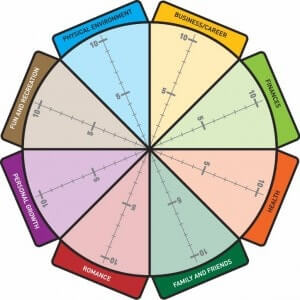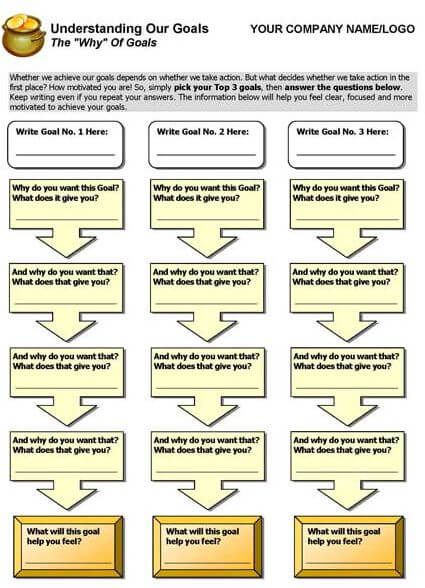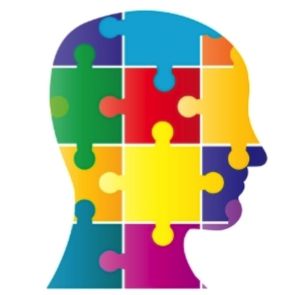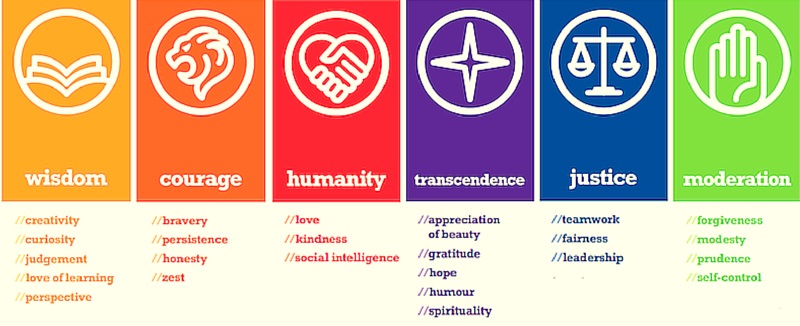Reading: 20 Life Coaching Exercises, Tools, Techniques
20 Life Coaching Exercises, Tools, Techniques
Life coaching is not for the faint-hearted.
It’s a career path that allows you to put your skills to use helping others, facilitating their personal and professional growth. The range of problems, challenges, and goals that clients bring to coaches is so vast, it would take an entire article just to list them all.
With such a broad range of practice, there are many skills and tools that a life coach must have in order to be successful. In this piece, we provide 40 exercises, tools, and tips for effective life coaching, plus links to other resources that may prove useful.
Read on to see if there are any exercises or tools that you can apply to your practice!
“Coaching is unlocking a person’s potential to maximize their own performance. It’s helping them to learn rather than teaching them.”– Timothy Gallwey
6 General Life Coaching Exercises
There are numerous tools in the life coach’s toolbox, and each life coach will likely have their own tools, exercises, and methods. However, there are some tools that have so much potential, they would be at home in almost any coach’s practice.
1. Wheel of Life
One of the life coach’s most valuable and versatile tools is the Wheel of Life. It’s a simple and easy-to-use exercise that can help clients find out which areas of their lives are most satisfying and where they would like to focus attention on improving their quality of life (The Coaching Tools Company, 2012).
There are only two steps to this exercise:
1) Review the 8 categories on the wheel and think about what would represent a satisfying life in each area:
- Health
- Friends & Family
- Significant Other
- Personal Growth
- Fun & Leisure
- Home Environment
- Career
- Money
2) Draw a line across each segment that best represents the current level of satisfaction, with the center of the wheel equal to 0 and the edge of the wheel equal to 10, the maximum level of satisfaction.
The end result looks a bit like a spider web and can give your client a general idea of their overall life satisfaction in relation to their desired life satisfaction.
You can find the Wheel of Life exercise and download a copy for yourself here. For more information on how you can use the Wheel of Life, check out this article.
2. Spheres of Influence
One of the many ways that we tend to get off track or bogged down while striving towards our goals relates to our “spheres of influence.” The idea behind the spheres of influence tool is that there are three distinct areas we can sort the comings and goings of life into:
- Things we can control
- Things we can influence
- Things we can’t influence, either right now or at all times
While we feel like there is nothing under our control, there is often at least one thing that we still have direct control over—our attitudes and behavior. Even when under enormous pressure or when we feel trapped, we always have that. What else are things we can control?
We also have the ability to influence certain factors we can influence in the right direction, even when we cannot completely change them. For instance, while we cannot control others’ attitudes or behavior, we can offer them advice and guidance, or provide evidence to help them make good decisions.
The final area in this exercise is for things that we have no control or influence over. This is the largest area since the majority of what happens in life is not under our direct control. A good life coach will help clients recognize and accept that there is much we cannot control, and how to concentrate energy on what we can influence.
Life coaches can walk their clients through the spheres, helping them identify what is within their control, what is in their sphere of influence, and what cannot be controlled. To read more about this tool, plus learn how clients can apply the lessons learned to their work, click here.
3. Journaling
Keeping a journal can be useful for many different reasons as a life coaching exercise. Daily journaling facilitates reflection and can spark useful brainstorming about how to better strive toward your goals. Coaches can help ensure that their clients’ journaling is helpful by providing some guidance.
To guide your client in journaling, use can use the handy JOURNAL acronym (Coach Federation, 2013):
- J – Judgement-free
Encourage your clients to write whatever is in their heart. This journal is personal, private, and a safe space to express their thoughts and feelings. - O – Observation
Journaling is an excellent opportunity for clients to step into an observer role. Instruct your clients to write down things that happen to them and spend some time thinking about how they interpret them. - U – Understanding
Piggybacking off of observation, what we observe can help us reach understanding about ourselves. How we perceive what happens to us is more important than what actually happens to us, and observing how we think can help us understand our own thought patterns, which can lead to effective management of our thoughts and behaviors. - R – Revelation
This process can often lead to revelations about our desires, our dreams, our goals, and aspirations. Journaling can help us get in touch with our core selves. - N – Needs Assessment
Keeping a daily journal makes it easier to notice problems and potential solutions, as the simple act of writing something down can make it seem simpler and clearer. Keeping everything bottled up can be extremely harmful, and just putting pen to paper can sometimes be all that is needed to release some pressure. - A – Awareness
Writing down your experiences helps your client to take a wider perspective on his or her life, as well as reminding them of problem areas and things they have to be grateful for. Raising awareness of these areas is the first step towards making the necessary changes and appreciating what they have. - L – Life
Quality Journaling is known to be an effective way to de-stress and decrease anxiety. Just a few minutes a day can have a major impact on health and happiness.
To learn more about the JOURNAL acronym, check out this blog.

4. Action Brainstorming Worksheet
The action brainstorming worksheet can help clients get out of a rut or a sticky situation.
This easy to use tool is only one page long, with a table that is split into five columns. The instructions are to think of actions or behaviors that you frequently engage in or would like to engage in, and direct them into the appropriate column.
- In the first column, the client writes down the actions or behaviors they would like to stop doing. These are behaviors that are not helpful for meeting any of their goals, or actively harmful.
- The second column can be filled with activities the client would like to do less of, such as activities that are sometimes helpful but time-consuming, or ways to destress that have been taken to an extreme.
- The middle column represents the actions or behaviors a client would like to keep doing. This is where clients will write down the things they do that they are satisfied within their current frequency, like regular exercise, paying their bills on time, or a weekly dinner with a loved one.
- The fourth column is the “do more” column, where clients are to write down the things they would like to do more frequently. For example, maybe they want to engage in a fun and fulfilling hobby more often or devote a little more time to a project that has real potential to succeed.
- The final column is the “start” column, which is where clients should list the actions and behaviors they would like to begin doing. This could be anything that helps them meet their goals, such as weekly exercise class for someone who is stressed, monthly networking for someone who is looking for a better opportunity, or an annual vacation for someone who is letting their life get overrun by work.
This easy-to-use, one-page tool can be viewed and downloaded here.
5. Understanding Our Goals
The Understanding Our Goals worksheet is intended to help clients figure out whether their goals are worth their time and energy, or to help them prioritize their goals in terms of utility.
This worksheet invites readers to identify their top three current goals and asks a series of questions to help them learn about why each goal is important to them and what they are hoping to gain. These questions begin with the simple “Why do you want this goal? What does it give you?” and essentially repeat several times to help the reader dr ill down into what they are really hoping to achieve.
ill down into what they are really hoping to achieve.
After answering these questions four times, the final question for each goal is “What will this goal help you feel?” Once the reader has reached the heart of the goal, answering this question should be easy.
As an example, take the goal of losing 20 pounds.
An answer to the first question may be “To look and feel stronger.”
The answer to the second repetition could be something like “Achieving this goal will allow me to take pride in how strong my body is.”
The third iteration may elicit a response like “Taking pride in my body will help me feel better about myself overall.”
The fourth question may then be answered with “Feeling better about myself overall will help me to tackle my other goals and improve my quality of life.”
Finally, the answer to the ultimate question, “What will this goal help you feel?” might be something like “Confident, proud of myself, healthy, and motivated to pursue all of my other goals.”
To see the worksheet for yourself or to download a copy for your clients, follow this link.
More Instructional Coaching Tools
The coaching website from Kristin Houser (www.mshouser.com) is an excellent resource for instructional coaches, but the tools and tips are not limited to one kind of coach – they can be adapted or modified to apply to all forms of coaching.
Here are some of her tools and processes for coaching, from beginning to end (Houser, “Instructional Coaching Tools”):
6. A Coaching Kick-Off Meeting
This is a great way to begin a coaching relationship, as it gets both parties up to speed on what the coach can offer and what the client is hoping to work on.
Questions to be answered at the kick-off meeting include “What’s going well?” and “What are they struggling with?” This is also where the coach and client can set up a schedule and agree on a way to keep in touch and track progress on goals.
7. Coaching Work Plan Tool
The coaching work plan tool includes space for identifying the client, the coaching goal, brainstorming ways to support the goal(s), how you will track progress, and any other notes. As you work through the coaching process, you can also note the progress that has been made and how you can support the client moving forward.
This tool is an excellent way for coaches to stay organized and devote as much time as possible to working with their clients.
8. Observation and Debrief Tool
This tool is geared towards teacher coaches, but it can be used with any client who a coach has the opportunity to observe in action. It provides space to take notes on what the coach observes when sitting in on a class or other client-led activity.
After the observation has ended, there are prompts to review the next steps and ask any clarifying questions, as well as discussion prompts for the coach and client. Finally, it ends with space for identifying the next steps.
These tools can help many coaches with many different kinds of clients, ensuring that the coach stays organized and on top of their coaching duties.
For more instructional coaching tools, there is an excellent resource page from www.instructionalcoaching.com that you can access here. You will find teaching tools, forms, and exercises that can take coaching from effective to highly impactful.

Coaching Assessment Tools
Coaches know that to make a change, you need to first assess your current state. Assessment tools are a great way to do this, and there are dozens if not hundreds of different assessments in disparate areas that can help. No matter the area of life that a client is committed to improving, there is probably an assessment that can help them get started.
Here, we go over four essential areas that coaches often help their clients understand, improve, or maximize (Stinnett, 2011):
- Leadership
- Personality
- Emotional Intelligence
- Personal Directions
These areas are identified in the context of leadership coaching, but we find that they are extremely relevant for life coaching as well. What is the intention of life coaching, if not to help the client take leadership of their own life?
Leadership Assessment
Leadership is a common area that coaches are called in to assess and improve. Whether it’s leadership in the boardroom, in a work team, or in one’s own personal life, leadership skills are an excellent resource to have in your toolbox.
These are some of the most popular leadership assessment tools.
9. Leadership Competency Inventory
The Leadership Competency Inventory measures leadership skills as a function of four leadership dimensions:
- Information seeking
- Conceptual thinking
- Strategic orientation
- Service orientation
This assessment is composed of 46 items gauging the degree to which the user has demonstrated certain behaviors. If the client is interested in getting a more holistic view of their leadership skills and abilities, they can have their colleagues, subordinates, or even friends respond to these items as well.
To learn more about the Leadership Competency Inventory, click here.
10. Leader Effectiveness and Adaptability Description (LEAD)
This assessment from developers Paul Hersey and Kenneth Blanchard helps the client figure out their leadership style and generates scores in four leadership areas:
- Supports
- Coaches
- Delegates
- Directs
The quadrant in which the client has the highest score is considered their dominant style, while the next highest score or scores represent their fallback style or the style they can use when their dominant style is not appropriate or effective.
This assessment is most useful for those who must practice active leadership in their work, but it can help those who may someday take on a more leading role to learn and prepare for that future.
You can see the assessment and try it for yourself or your clients here.

11. Leadership Style Questionnaire (Bergquist)
This questionnaire is similar to the previous assessment, in that it divides leadership style into four quadrants. However, this assessment replaces the “Supports” quadrant with “Facilitating.”
The different styles can be briefly described as follows:
Directing
A leader high in the “Directing” style likely provides detailed instructions, specific goals, and works closely with staff.
Coaching
A coaching leader likes to motivate and encourage staff, both praising their success and providing feedback for them to improve.
Facilitating
A facilitating leader involves staff in the decision-making process, listens to their comments and concerns, and is likely to have an “open-door” policy.
Delegating
A leader high in “Delegating” provides less detail than a directing leader, and expects staff to find their own way in navigating their goals and objectives.
Like the LEAD, this assessment can be a useful tool for leaders and future leaders to think about their own personal style. This questionnaire can be accessed by anyone through SurveyMonkey at this link.
Personality Assessment
Personality assessments are very common in all types of coaching, as well as the classroom, a therapist’s office, and in guidance counseling.
While there is no personality assessment that can tell you exactly who you are and what is most important to you, the results from these assessments can be an excellent guide to learning more about yourself and making sure your goals line up with your priorities.
A few of the most popular personality assessments are described below.
12. Myers-Briggs
The Myers-Briggs Type Indicator ®, or MBTI ®, is perhaps the most well-known personality inventory. It narrows down the test taker’s personality based on four bipolar dimensions:
- Favorite world: Extraversion or Introversion
- Information: Sensing or Intuition
- Decisions: Thinking or Feeling
- Structure: Judging or Perceiving
Individuals can fall anywhere along the spectrum between the two poles, but they will always be a bit closer to one than the other. This results in 16 possible personality types, all with their own unique characteristics.
This tool has been used in the corporate world as well as in schools and workplaces. When you know more about your distinct preferences, you might learn how to put them to best use. Results are not a crystal ball with your life plan, but they can be a useful resource when building an outline of your future goals.
13. VIA Inventory of Strengths (Seligman)
The Values in Action Inventory of Strengths, or VIA-IS, is another popular assessment tool. This is different from the MBTI in that it focuses on values instead of traits or preferences. It still provides a window into understanding your personality, but it focuses on your strengths instead of neutral factors.
There are 24 character strengths, divided into 6 categories:

The VIA-IS will rank your strengths from most dominant to least, with a special emphasis on your top five. These top five strengths are where you draw the most energy from, and represent you at your personal best. The intention is to modify your life so you can put your top strengths to use as much as possible.
To take the free, 15-minute VIA-IS, click here.
14. Personal Values Questionnaire
The Personal Values Questionnaire can help your clients to understand themselves better, think about the choices they make, and ensure that their actions and behaviors are in line with their values. A mismatch between values and actions can lead to unhappiness and emotional distress, while a good match can facilitate growth and enhance well-being.
This assessment, created by researcher David McClelland, will help individuals find out how important the three social values (achievement, affiliation, and power) are to them. The idea behind this assessment is that these values drive our behavior, and can help explain why we do the things we do or have the motivations that we do.
This assessment can be completed online for the cost of $25. It only takes 15 minutes to complete, and it can provide valuable information for the coach and the client about their needs and desires in life. Click here to learn more about the Personal Values Questionnaire.
Emotional Intelligence Assessment
Emotional intelligence was identified and described long after the original idea of intelligence was defined, but it may be even more important than standard intelligence as we understand it.
These three assessments are some of the most popular ways to measure emotional intelligence. Find more EI assessments here.
15. Emotional and Social Competency Inventory
The Emotional and Social Competency Inventory, or ESCI, is a measure of emotional and social competency based on completed questionnaires from the individual as well as those they select to receive feedback from. They can nominate family members, friends, coworkers, direct reports, or others who they interact with regularly.
This feedback is analyzed to produce a report on the individual’s emotional and social competency that they can use to learn more about themselves and how they are perceived. This can be valuable feedback for anyone who is looking to improve or make changes in their behavior to pursue their goals, especially if their goals involve others (e.g., a goal of getting promoted or becoming a better friend).
This assessment is available here and will take about 30 to 45 minutes to complete.
16. Self-Report Emotional Intelligence Test
This self-report test from researcher Nicola Schutte, and generates a measure of emotional intelligence based on four subscales:
- Emotion perception
- Utilizing emotions
- Managing self-relevant emotions
- Managing others’ emotions
The test consists of 33 items on a scale from 1 (strongly agree) to 5 (strongly disagree). The results include a score for each sub-scale and a total EI score.
Results of this test can be used to help you and your client explore their emotional patterns and set goals for better identification, understanding, and/or management of emotions.
Click here to learn more about the SEIT.
17. Wong’s Emotional Intelligence Scale
This scale from researcher Chi-Sum Wong also measures four areas of emotional intelligence, although they differ from the SEIT:
- Appraisal and expression of emotion in the self
- Appraisal and recognition of emotion in others
- Regulation of emotion in the self
- Use of emotion to facilitate performance
This assessment includes 20 scenarios where the respondent is tasked with choosing their most likely response and 20 “ability pairs” where the respondent must choose which ability best represents their strength.
You can learn more about this scale here.
18. Personal Directions Tool
The Personal Directions Inventory is an assessment that provides feedback on 11 quality of life variables and 17 motivational dimensions. Completing this tool can give clients an idea of the desires that motivate them, where they are devoting their energy, and where they should devote their energy going forward.
The 17 directions are split into six categories as follows:
Affiliating
- Receiving
- Belonging
- Expressing
Attracting
- Gaining
- Stature
- Entertaining
Perceiving
- Creating
- Interpreting
Mastering
- Excelling
- Enduring
- Structuring
Challenging
- Maneuvering
- Winning
- Controlling
Maintaining
- Stability
- Independence
- Irreproachability
The section on your “personal world” is split into xx categories based on which “self” it concerns:
Professional/Public Self
- Career
- Economic
- Community
- Interpersonal
Leisure Self
- Recreation
- Travel
- Nature
- Palate
- Arts
Personal Self
- Practical
- Arts
- Home
- Romance
- Family
Inner Self
- Intellectual
- Ideological
- Physical
- Emotional
- Spiritual
This tool provides results along all of these dimensions, helping the client to understand what is important to him or her and focusing their attention on the areas they want to improve.
